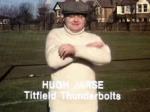
Originally Posted by
60YearsAPie

The Meadows was originally a large area of wetland/floodplain which extended from the River Leen to the River Trent. This area was drained and gradually developed for a variety of uses, incorporating terraced housing, public houses, factories, warehouses and public buildings such as libraries and swimming baths. The terraced housing was constructed mainly for those that worked on the railways and in the factories.
At the time the Magpies were called the Lambs the Meadows area would definitely not have been classed as slums.
In 1901, Victoria Embankment, a 1¼ mile long masterpiece of Victorian flood defence engineering with a promenade and carriage-way, opened, along with the New Meadows recreation ground.
In 1920, Jesse Boot purchased the remainder of the land within the Embankment adjacent to the Trent and then bequeathed it to the citizens of Nottingham in perpetuity for recreational use and memorial. This included the memorial gardens, playing fields and war memorial.






 Reply With Quote
Reply With Quote



